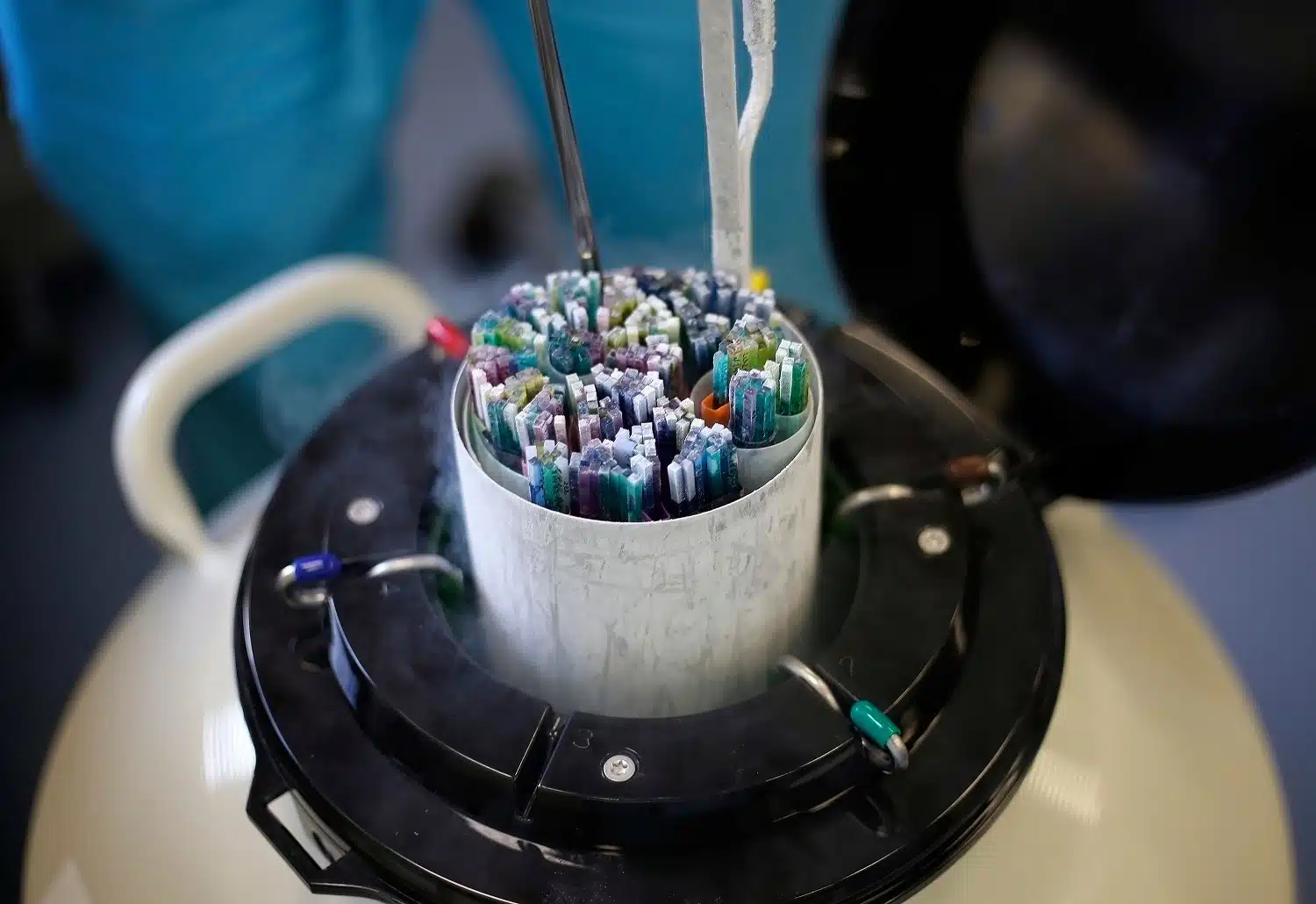What is an embryo, and how is one created?
According to the Oxford Living Dictionaries, an embryo is “a human offspring during the period from approximately the second to the eighth week after fertilization.” Before freezing can take place, suitable embryos have to be created. To create an embryo in the laboratory, the eggs must first be harvested and fertilized. First, the woman will be given hormones to make sure she ovulates correctly. She is then given fertility medications to increase the number of eggs she produces. In the hospital, a doctor will extract the eggs, using an ultrasound machine to ensure accuracy. The eggs may be frozen or used at once. If the woman wishes to become pregnant at once, in vitro fertilization (IVF) or intra-cytoplasmic sperm injection (ICSI) may be used to fertilize the egg. During the process of IVF, the eggs are exposed to sperm and the mixture is cultured in a laboratory. Fertilization may take 16 to 20 hours. The fertilized eggs are called embryos. An embryologist will monitor the development of the embryos over the next 6 days, after which a suitable embryo may be chosen for implantation. In ICSI, once the eggs have been extracted, a single sperm is injected directly into an egg. This may be done if there is a problem with the sperm or if past attempts at IVF in Iran and other countries have been unsuccessful. While one embryo can be used for pregnancy, others may be frozen.

How is an embryo frozen?
Embryo Freezing in Iran The main goal of embryo freezing is to preserve the embryo for later use. The biggest problem is the water within the cells. When water freezes, crystals can form. This expansion can burst the cell, causing it to die. To prevent this from happening, the water in the embryo’s cells is replaced with a protective substance called a cryo-protectant. The embryos are left to incubate in increasing levels of cryoprotectant before they are frozen.
Once most of the water has been removed, the embryo is cooled to its preservation state through one of two methods of embryo freezing:
- Slow freezing: This involves protecting the embryos from damage in sealed tubes and then slowly lowering the temperature in the tubes. This prevents embryo cells from aging and becoming damaged. Embryos can last much longer in their frozen state than in their fresh state. However, slow freezing is time-consuming, and it requires expensive machinery.
- Vitrification: In this process, the cryoprotected embryos are frozen so quickly that the water molecules in the embryos do not have time to form ice crystals. This helps to protect the embryos and to increase their survival rate during thawing.
After freezing, the embryos are stored in liquid nitrogen until they are needed for future use.
Success rates of thawing frozen embryos
The process of thawing an embryo is relatively successful. Some research has indicated that embryos frozen through vitrification have a better chance of survival, both at the freezing stage and during thawing.

Side effects of embryo freezing
Any risks and side effects involved in embryo freezing usually happen during the process of extracting the eggs from the woman’s body. Common side effects from extracting embryos for freezing are typically mild and temporary. They include:
- Cramping or bloating
- Feelings of fullness
- Bleeding
- Changes in vaginal discharge
- Infection
- Overstimulation of the ovaries

How long can embryos be frozen for?
In theory, a correctly frozen embryo can remain viable indefinitely. The embryos are held in sealed containers at temperatures of -321ºF. At this temperature, almost no biological processes such as aging can occur.
- There are examples of successful pregnancies that have resulted from eggs that had been stored for up to 10 years. There is no long-term research into embryo freezing, because this procedure has only been carried out since 1983.
- Some countries choose to regulate the length of time an embryo can be stored. Freezing and storing embryos is also expensive, and each clinic has its own rules about what happens if a woman can no longer use her own embryos or keep them frozen.
Frozen or fresh embryos?
- A study posted in the International Journal of Reproductive Medicine looked at the results of over 1,000 cases of embryo transfer using either fresh or frozen embryos.
- The results found no statistical difference between using fresh and frozen embryos for transfer. The study noted that frozen embryos could also be used for additional embryo transfers in the future while fresh embryos could not.
- Other research suggests that frozen embryo transfer may be better than with fresh embryos. A recent study compared fresh and frozen embryo transfer. The results indicate that frozen embryo transfer is associated with a higher rate of pregnancy, and better outcomes for both the mother and the embryo.













